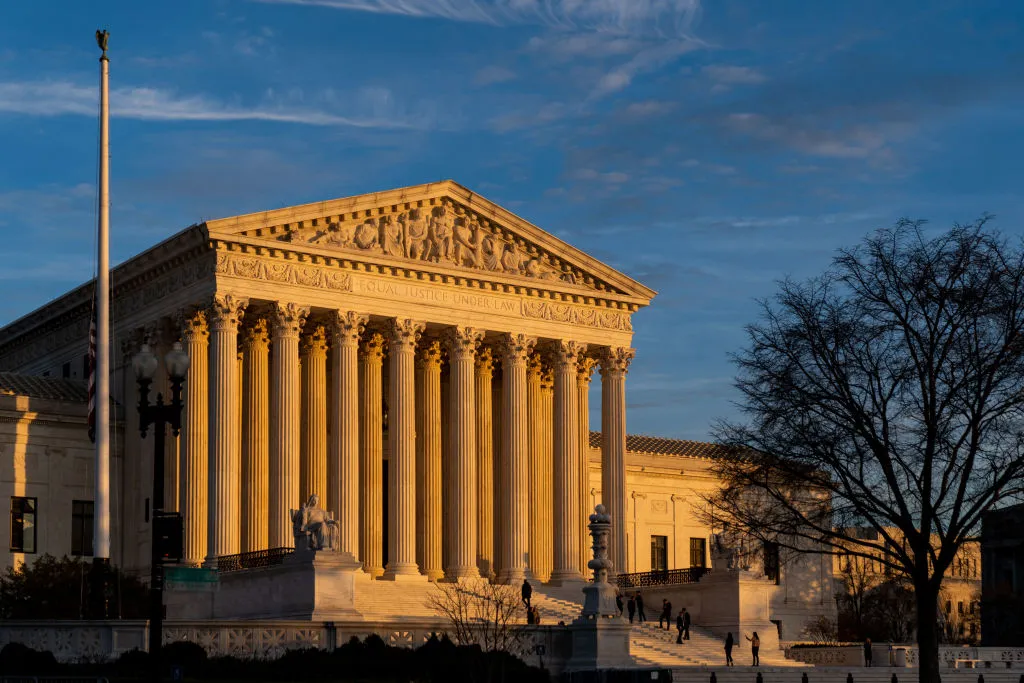How Long Is a Supreme Court Justice Term
How Long Do Supreme Court Justices Serve: The Case for Eighteen-Year Terms
The power wielded by the Supreme Court of the United States is immense. While not directly chosen by the public, the justices are indirectly tied to the people through nomination and confirmation by elected senators and the president. The original intention of granting lifetime appointments to Supreme Court justices, to serve “during good behavior,” has evolved in the face of extended lifespans and the complexity of modern governance. This has led to justices serving for decades, sometimes exceeding the expectations of the framers. The combination of prolonged service and the politicization of the Court’s decisions has made the process of appointing justices a contentious facet of presidential elections. To address this, a solution has been proposed: introducing fixed eighteen-year terms for Supreme Court justices.
Understanding the Active/Senior Justice Model
When it comes to the United States Supreme Court, the question of how long a justice serves is of paramount importance. Unlike other government positions, Supreme Court justices do not have a fixed term. Instead, they enjoy life tenure. However, this life tenure is further divided into two distinct periods: a phase of active service lasting 18 years and a senior phase that continues for the remainder of a justice’s life term. In this article, we will delve into the active/senior justice model, providing a comprehensive understanding of how it works and its implications.
The Traditional Notion of Life Tenure
Traditionally, Supreme Court justices have held their positions for life, which means they can serve until they choose to retire or pass away. This concept was enshrined in the U.S. Constitution to ensure judicial independence and protect justices from political pressures or undue influence. However, as the average lifespan has increased, some have raised concerns about the potential for justices to serve for excessively long periods, potentially impacting the Court’s dynamism and representation.
The Emergence of the Active/Senior Justice Model
In response to these concerns, legal scholars and policymakers have proposed the active/senior justice model. This model seeks to strike a balance between the need for judicial independence and the desire to ensure a more predictable turnover of justices. Under this model, a justice’s tenure is divided into two phases.
Phase 1: Active Service (18 Years)
The first phase of a Supreme Court justice’s term is the active service phase, which lasts for 18 years. During this time, justices are fully engaged in their duties, participating in the Court’s decision-making processes and hearing cases. This phase ensures that justices remain active and engaged in their roles, bringing fresh perspectives and ideas to the bench.
Phase 2: Senior Phase (Remaining Life Term)
After completing their 18 years of active service, justices enter the senior phase, which lasts for the remainder of their life term. During this phase, justices still hold their positions but take on a reduced caseload. This allows them to continue contributing their expertise and institutional knowledge to the Court while allowing for new appointments to ensure a diverse and dynamic bench.
Benefits of the Active/Senior Justice Model
The active/senior justice model offers several advantages:
1. Continuity and Experience
By retaining justices in the senior phase, the Court benefits from their valuable experience and institutional memory. This continuity helps maintain the stability and consistency of the judicial system.
2. Predictability
The 18-year active service phase provides predictability in terms of when vacancies on the Court will occur. This can help mitigate the politicization of the nomination and confirmation process.
3. Fresh Perspectives
The model ensures that new justices regularly join the Court, bringing fresh perspectives and ideas. This prevents stagnation and promotes diversity of thought.
4. Judicial Independence
Life tenure is preserved, ensuring that justices remain insulated from political pressures during their active service phase.
Length of a Supreme Court Justice’s Term
Supreme Court justices effectively serve lifetime terms, as long as they exhibit “good behavior.” There are two ways a justice’s term can end:
Life Tenure
Most justices serve for life. They remain on the Court until they decide to retire, usually for personal reasons when they feel they can no longer effectively fulfill their duties. Some justices have served over 30 years.
Retirement or Death in Office
Justices may also end their tenure by retiring or dying while still in office. The average Supreme Court justice serves for about 16 years and remains on the bench until age 78. Some died suddenly while still serving.
Appointment Process for Supreme Court Justices
Supreme Court vacancies occur whenever a justice leaves the Court. Here is how new justices are appointed:
Nomination by the President
When there is a vacancy, the President nominates a replacement based on their assessment of the nominee’s qualifications.
Confirmation Hearings and Vote
The nominee must be confirmed by a majority vote in the Senate after public hearings before the Senate Judiciary Committee.
Historical Perspective on Supreme Court Terms
Average Supreme Court Tenure Over Time
The average tenure of Supreme Court justices has risen dramatically over the past century, from about 15 years or less before 1870 to over 26 years since 1970.
Longest-Serving Justices
- William O. Douglas served 36 years, the longest in Supreme Court history. Other notably long-serving justices include Stephen Johnson Field (34 years) and John Marshall (34 years).
Controversies and Debates Surrounding Life Tenure
Life tenure for Supreme Court justices has generated ongoing controversies and debates:
Arguments in Favor of Life Tenure
- Protects justices from political pressures and makes them independent
- Allows justices to develop deep expertise and consistency on the Court over long time periods
Arguments Against Life Tenure
- Justices serve too long, causing diminished performance in old age
- Presidents have fewer opportunities to appoint new justices, skewing the Court ideologically over time
- Life expectancy has increased substantially since the Constitution’s drafting
Proposals for Term Limits or Mandatory Retirement Ages
There have been various proposals to limit Supreme Court tenure:
Pros and Cons of Term Limits
Term limits would provide more frequent turnover in justices. However, they may also increase politicization of the appointment process. 18-year staggered terms have been one common proposal.
Pros and Cons of Mandatory Retirement Ages
A mandatory retirement age of 70-75 has often been suggested. This would address concerns over diminished mental acuity but still allow reasonably lengthy tenure. Critics argue it is age discrimination.
Conclusion
In the United States, Supreme Court justices effectively have life tenure, usually serving over 25 years on average. While life tenure remains controversial, it is engrained in the Constitution, making reforms challenging absent a Constitutional amendment. Proponents argue it protects judicial independence, while critics claim it skews the Court over time and keeps justices on too long. Reform proposals have included term limits or mandatory retirement ages, but neither has gained sufficient political momentum.
FAQ 1: How many years is a term on the Supreme Court?
There are no fixed term lengths for Supreme Court justices. Justices serve indefinite lifetime terms until they resign, retire, or die.
FAQ 2: What is the mandatory retirement age for Supreme Court justices?
There is currently no mandatory retirement age for Supreme Court justices. Some reform proposals have suggested instituting a mandatory retirement age in the 70s.
FAQ 3: Can Supreme Court justices be reappointed?
No, Supreme Court justices cannot be reappointed after completing a term. They serve a single lifetime appointment.
FAQ 4: Who has served the longest term on the Supreme Court?
The justice with the longest tenure in Supreme Court history is William O. Douglas, who served for over 36 years from 1939 to 1975.
FAQ 5: Is there a limit to how long a Supreme Court justice can serve?
No, there are no term limits for Supreme Court justices. They can theoretically serve for life unless they voluntarily resign or retire, face impeachment, or die in office. A few justices have served over 30 years.






